Can Seasonic X-Series 660W handles your computer needs? Let’s find out as we put it through our test by pairing it up with Core i7 2600K overclocked and GTX 580. Did it survive our torture test?…
Introduction
Not all PC users require extreme systems that use over 700+ watts during operation. After the successful release of Seasonic’s 550W, 650W and 750W power supplies, it looks like there are a few extra additions to their X-Series power supply line. One of them is the high wattage 850W PSU, and the other is the new 660W PSU that we are taking a look at today.
Seasonic has been making high-quality power supplies ever since they hit the market two years ago. Not only is their new X-660 660W power supply 80Plus Gold rated, but also comes with a quiet fan. The PSU’s fan does not kick in till the user reaches 20±5% load, and it maintains a 16dB(A) acoustic noise level until it reaches 50% load. From that point on the fan speed begins speeding up, still maintaining low acoustic noise. The Seasonic X-660 750W power supply is also 100% modular, which makes it very easy to install and prevents large cable messes from accumulating.
One of the main reasons we are hoping we will enjoy this power supply is due to its silent operation during idle states and its quiet operation during full load. Hopefully we will have a positive outcome after we test this power supply.
Features
Special Features –
- 80PLUS® Gold Certified Super High Efficiency
- Full Modular Cabling Design
- Patented DC Connector Module with Integrated VRM
- DC to DC Converter Design
- Seasonic Hybrid Silent Fan Control
- Sanyo Denki San Ace Silent Fan
- Conductive Polymer Aluminum Solid Capacitors
- Highly Reliable 105℃ Japanese Brand Capacitors
- Tight Voltage Regulation [±3%]
- Active Power Factor Correction [99% PF Typical]
- High +12V Output
- High Current Gold Plated Terminals
- Dual Sided PCB Layout
- Ultra Ventilation
- Multi-GPU Technologies Supported
- All-in-One DC Cabling Design
- Easy Swap Connector
- Universal AC Input
- 5 Years Warranty
Featuring a patent pending design of “DC Connector Module with Integrated VRM”, the X Series is set to achieve both near-perfect DC to DC conversion and fully modularized design without compromising efficiency. After a long wait, finally there is a product that delivers the complete package, ultra-high efficiency, greatly improved dynamic response, and customizable cable arrangement that is tailored to meet any individual’s needs.
The X Series adopts a clever “Hybrid Silent Fan Control” design, which offers three distinct operation modes, fanless mode, silent mode, and cooling mode. The X automatically adjusts fan mode and speed according to the ambient temperature level. This brand new design not only optimizes heat dissipation, but also prolongs lifespan of the system by reducing unnecessary fan rotation. To make the X Series even more robust and exciting, Seasonic offers Sanyo Denki San Ace Silent Fan on X, the best fan there is in the industry.
The world-renowned Sanyo Denki Ball bearing fans are made of the highest quality components to ensure maximum quality and performance. The use of spoon shaped high-density plastic fan blades with smoothed leading edges, strict tolerance ball bearings and precision copper axel are just some features to ensure ultra low noise performance and quality. In addition, the fan uses 3 balancing points, instead of the industry standard of 2 points, to ensure perfect balance and rotation. The Sanyo Denki fan is a perfect match to the class leading Sea Sonic Hybrid Silent Fan control for the absolute top performance of the industry.
Specifications
1. Dimension: W150 x L160 x H86 mm
2. AC input & DC output voltages / Wire Configuration
Model: X-660 (SS-660KM Active PFC F3)
Understanding PSU RAILS
We have all no doubt been told when purchasing a power supply, that the number to look for is the amps on the 12V rail. What are each of the different rails for though, and why is the 12V rail typically the most important? Why the heck are they called rails? Let’s take at look at each and see.
-12V – This rail is pretty much obsolete now and is only kept on to provide backward compatibility with older hardware. Some older types of serial port circuits required both -12V and +12V voltages, but since almost no one except industrial users use serial
-5V – Again this is another obsolete rail, the -5V was used for old school floppy controllers and some ISA bus cards. Again, no need for the typical home user to worry about this rail.
0V – Though not listed on any manufacturer spec sheet, every power
+3.3V – Finally we are starting to get into something useful! The +3.3V rail was introduced with the ATX form factor in order to power second generation Pentium chips. Previously the CPU was powered by the +5V rail (along with the system memory and everything else on the motherboard), but a reduced voltage was needed in order to reduce power consumption as the chips got faster.
+5V – As mentioned above, the +5V used to run the motherboard, CPU and the majority of other system components on older pre ATX based systems. On newer systems, many of the components have migrated to either the +3.3V or +12V rails, but the motherboard and many of its onboard components still use the +5V rail so it is of importance to the typical home user.
+5V SB – The +5V Standby or “Soft Power” signal carries the same output level as the +5V rail but is independent and is always on, even when the computer is turned off. This rail allows for two things. First, it allows the motherboard to control the power supply when it is off by enabling features such as wake up from sleep mode, or wake on LAN technology to function. It also is what allows Windows to turn your computer off automatically on shutdown as opposed to previous AT supplies where you had to bend over and push the button. Every standard ATX power supply on the market will include this rail.
+ 12V – The +12V, also known as the mother of all rails, is now used to power the most demanding components in your system including the CPU, hard drives, cooling fans, and graphics cards. Historically the +12V rail was used only to power drives and cooling fans. With the introduction of the 4-pin CPU plug on P4 motherboards and then eventually AMD based motherboards, in order to supply newer power hungry CPUs, the +12V rail suddenly started to grow in importance. Today, multi core based motherboard require an 8-pin +12V connector to supply their power needs. High end GPU cards have also jumped on the +12V rail, which has required PSU makers to adapt. Where previously there was only a single +12V rail, there are now two or more, each designated to power specific devices in order to ensure that nothing is underpowered.
A Closer Look
Inside the box, there was plenty of cushioning to protect the power supply and there was another part to the box that separated the accessories from the power supply. To give extra protection to the power supply, Seasonic also included a very handy soft carrying bag. We assume that it also prevents static discharge to prevent any damage to the power supply from the soft bubbly Styrofoam-like cushioning inside the packaging. Finally, here is a quick peek of the power supply outside the soft bag.
The power supply comes with several accessories, including zip ties, velcro strap ties, a manual, some installation screws and a sticker, and additional information for warranty. The rest of the objects are the Power Supply and the cables contained inside the cable holder bag.
While the overall appearance of the power supply did not quite impress us, one feature of this power supply stands out from the rest of the power supplies on the market. Over the past few years after testing many fan configurations, we have come to notice that 120mm fans are probably the best solution for cooling power supplies quietly. The reason for this is simple: while small fans like 80mm fans could push enough air to cool down a power supply, they would need to spin much faster, creating lots of noise. On the other hand, though bigger fans can help reduce overall noise with the same cooling as a small high RPM fan, according to some of our fan tests, fans larger than 120mm are actually get noisier, due to air being pushed against the fins and sides of the fans. This is why it is very nice to see Seasonic including a 120mm fan instead of the larger 135mm or 140mm fans that other companies use.
This is not all however. The Seasonic X-Series 660W modular power supply uses Hyper Fan Controlled settings. This helps the fan stay at 0 dB(A) till the overall load reaches 20±5%. After this load is reached, the fan starts spinning at a low RPM only producing 16 dB(A) of noise. This is not audible to human ears especially if the PSU is in a closed chassis, or 1 or two meters away from the ears. The RPM stays at this level till it reaches 50% load, and after that slightly speeds up the fan to keep the power supply cool under operation.
And finally, here we see a picture of the modular leads that the Seasonic X-Series power supply comes with. For more information about the cable length and the exact number of leads that come with this power supply, please visit the specifications page of this review.
Testing
When it comes to power supplies, what we’re really looking for is good clean voltage and plenty of it. Industry standards are 5% variance on any rail maximum, which is a little more lax than our standard of 3% max everywhere except the +5vSB (+5v stand by), which is always on, even when the power supply and computer are off. On the +5vSB it’s not unusual to see 5% and since it’s only for wake on LAN or by device feature it’s not a big deal.
Like a lot of enthusiasts out there, our PC’s are an ongoing work of art that we have a lot of cash invested in. If a PSU won’t hold to 2 or 3% load/idle no matter what we do to it, we won’t use it or recommend it.
Finally, we pushed the Power Supply close to their Full load to accurately represent a real-life high load scenario. We recorded Idle and Load voltages, Wattage, Ripple, and fan noise.
Testing Equipment
| Seasonic X-Series 660W Modular Power Supply Testing Equipment |
|
| Multimeter | RadioShack Digital Multimeter |
| Wall Voltage | Kill-A-Watt Measuring Tool |
| Oscilloscope |
Hitachi Oscilloscope V-212 |
| Phonometer |
Extech Instruments 407730 Sound Level Meter w/ tripod |
To test the Voltages on each rail and then measure the overall wattage used by the whole computer system, we used two different pieces of equipment. We used the RadioShack Digital Multimeter to measure the voltages on each rail (5V,12V,3.3V). To measure the overall wattage used by the computer system we used a Kill-A-Watt Measuring Tool. The device plugs into the wall and we attach the power supply directly to the Kill-A-Watt. The results were precisely recorded in a Word document. To test the power supply’s ripple, we used a Hitachi V-212 Oscilloscope. To measure the ripple we measured the 12V, 5V, and 3.3V rails with the oscilloscope and measured the AC current. To test for ripple the AC current needs to be measured instead of the DC. Finally, we used Extech Instruments’ 407730 Sound Level Meter on a monkey bar tripod about 1 foot away from the power supply to record the fan noise. The results for each of the tests performed can be found below.
Test Rig
Test Rig |
|
| Case | Test Bench |
| CPU |
Intel Core i7 2600K @ 4.4 GHz |
| Motherboard |
ASUS P8P67 WS Revolution |
| Ram |
Patriot Gamer 2 Series 1600 MHz Dual-Chanel 16GB (4x4GB) Memory Kit |
| CPU Cooler | Thermaltake Frio OCK |
| Hard Drives |
4x Seagate Cheetah 600GB 10K 6Gb/s SAS Hard Drives |
| SSD | 1x Zalman SSD0128N1 128GB SandForce SSD |
| Optical | ASUS DVD-Burner |
| GPU |
1x Nvidia GeForce GTX580 (Main Video Card) 1x Nvidia GeForce GTX560 Ti (PhysX) |
| Additional Cards |
LSI 3ware SATA + SAS 9750-8i 6Gb/s RAID Card |
| PSU |
Silverstone Strider Plus 850W Modular Power Supply Ultra X4 750W Modular Power Supply Seasonic X-Series 660W Modular Power Supply |
| Mouse | Razer Mamba |
| Keyboard | Logitech G15 |
| Monitor |
Asus VG236H 23″ 120Hz 3D Monitor (1920×1080) |
| Speakers | Logitech Z-2300 2.1 THX Certified Speakers |
Two different tests will be done with this testing system. One test will be conducted under stock settings, while the second test will be conducted under overclocked settings on the CPU and Video Card. To put the system under load condition, we used OCCTs Power Supply tester to stress the whole system while running FluidMark in the background to load the PhysX card. Let’s take a look at the results.
results
|
Power Output Results(V) – Overclocked System (GPU, CPU) |
||||||
|
Power Rail |
Silverstone Strider Plus 850W Modular (80 Plus Silver) |
Ultra X4 750W Modular PSU (80 Plus Bronze) |
Seasonic X-Series 660W Modular (80 Plus Gold) |
|||
|
Idle |
Load |
Idle |
Load |
Idle |
Load |
|
|
3.3v |
3.38V |
3.33V |
3.30V |
3.26V |
3.376V | 3.305V |
|
5v |
5.08V |
5.06V |
5.09V |
5.04V |
5.01V | 5.00V |
|
12v1 |
12.18V |
12.13V |
12.2V |
11.98V |
12.096V | 12.00V |
|
12v2 |
N/A |
N/A |
N/A |
N/A |
N/A | N/A |
|
12v3 |
N/A |
N/A |
N/A |
N/A |
N/A | N/A |
|
12v4 |
N/A |
N/A |
N/A |
N/A |
N/A | N/A |
|
12V5 |
N/A |
N/A |
N/A |
N/A |
N/A | N/A |
|
12V6 |
N/A |
N/A |
N/A |
N/A |
N/A | N/A |
|
Wattage Used |
175W |
619W |
179W |
625W |
168W | 610W |
The results clearly show that the Seasonic X-Series 660W Modular PSU (SS-660KM) is a true contender capable of competing with other well known power supplies. We compared the Seasonic 80 Plus Gold PSU to two other Power Supplies ranging from 80 Plus Bronze to 80 Plus Silver PSUs. We were able to push the Seasonic to 610W at full load, making it a perfect PSU for heavy load. Even at very high loads on the Seasonic X-Series 660W PSU, the voltages were still right where they should be. The 3.3V rail was within a very close 0.13% range of perfect operation voltage, while the 5V and 12V rails were perfectly running at the required voltages. This is what we call clean controlled voltage. The other PSUs struggled to keep a stable voltage depending on how hard we pushed them. The Ultra X4 750W power supply showed a huge drop from 12.2V to 11.98V at 625W of power consumption. From this we can tell that if we would push more hardware in our system, this voltage would drop even further, possibly making the system unstable. This can cause a lot of problems during overclocking and tweaking
While the Seasonic 660W PSU is not a monster in Full Power Output, it still has a great efficiency compared to the other two PSUs tested in this review. We can see a 15W and a 9W power consumption difference on the Ultra X4 PSU and the Silverstone Strider PSU respectively at full load.
Ripple Test Results
Example Images for our testing – Click Image For a Larger One
| Rails Tested | Overclocked System – Hitachi Oscilloscope V-212 – Ripple Results |
|---|---|
| 12V |
~10mV ripple |
| 5V |
~7mV ripple |
| 3.3V |
-2mV ripple |
Fan Noise Results
| Condition | Acoustic Level Measured |
|---|---|
| Idle |
0dBa (20 min after fan turns on for 1-2 min) |
| Load |
36dBa (Very Quiet, barely audible to the human ear in a room unless the PSU is in an open environment in a quiet room) |
To perform accurate readings with our decibel meter, we had to make sure that we isolated all the other noise from the system. This was a bit difficult to do, but we tried our best to position the system behind sound-dampening foam objects to cut down on the noise coming from the video cards and other devices like the hard drives.
When we first turned on our system and stopped all the fans in the computer, we could hear nothing besides the hard drives. If we un-plugged the hard drives, there were 0 dB(A) coming from the system. After leaving the system on for about 20 minutes, the fan on the Seasonic PSU finally turned on. A minute or two later, the fan turned off once again. After pushing 610W of power through the PSU, the fan was still off for about 1-2 min. After that the fan turned on once again and we measured 36 dB(A). It is important to understand that 36dBa from 1 feet away is minimal considering that an NVIDIA GTX 580 at load runs at 48 dB(A), and it is still fairly quiet. Most graphics cards run around 38-45 dB(A), even while idling. After we pushed a lot of load through the PSU, the acoustic noise coming from the PSU was so quiet that a user would not be able to hear it in a closed chassis. We were very surprised by the results and very satisfied with the Hyper Fan Control System.
Conclusion
The Seasonic X-Series 660W Modular Power Supply (SS-660KM) did not fail to deliver no matter what we threw at it. Of course, it is important to understand that while this power supply can handle two high-end video cards, a RAID card, and lots of other hardware at the same time, a 750W or 850W PSU is recommended for dual-GPU systems. Each of the Seasonic X-Series power supplies have their own specifications and the extra price on the 750W and 850W PSUs could also be an advantage in noise level. For example, the X-Series power supplies from Seasonic are designed to spin up the fan when 20±5% load is reached. While in our instance even when we were running at 610W the fan only turned on after 1-2 minutes into the benchmark, a more powerful PSU will be able to handle higher wattage with lower acoustic level.
We would also like to say that while this power supply performed great on the voltage tests, and power consumption, along with providing clean power to our hardware, it is not suitable for overclockers. This Power Supply will be great especially for office users, or for people worried about noise like audio and video users. Of course this power supply can also be used by gamers, but we would recommend a 750W or a 850W PSU from Seasonic for ultimate SLI and CrossFire based systems that are intended for overclocking.
| OUR VERDICT: Seasonic X-Series 660W Modular PSU | ||||||||||||||||||
|
||||||||||||||||||
| Summary: We had a flawless experience and no problems whatsoever during our testing period with the Seasonic X-Series 660W SS-660KM Power Supply. For its excellent maintenance of proper voltage and its 80Plus Gold efficiency, the Seasonic X-Series 660W Modular PSU deserves Bjorn3D Golden Bear Award. |
 Bjorn3D.com Bjorn3d.com – Satisfying Your Daily Tech Cravings Since 1996
Bjorn3D.com Bjorn3d.com – Satisfying Your Daily Tech Cravings Since 1996





















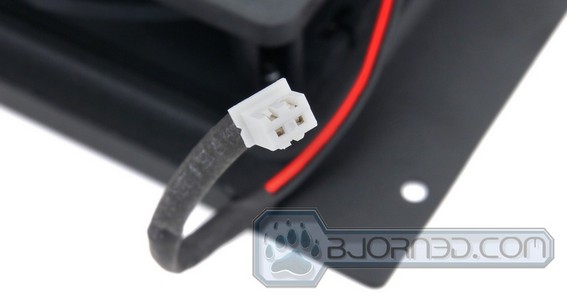
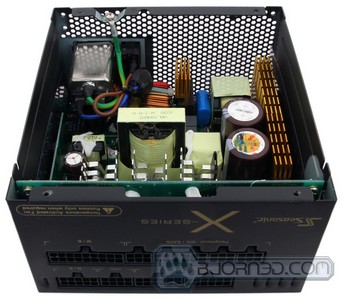
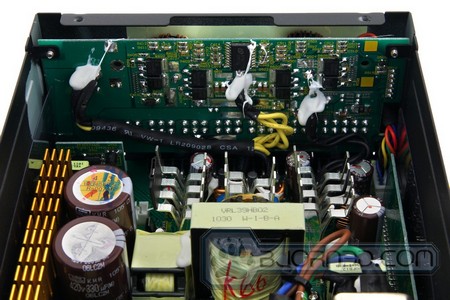
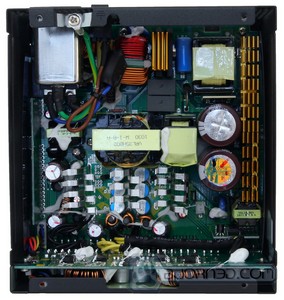
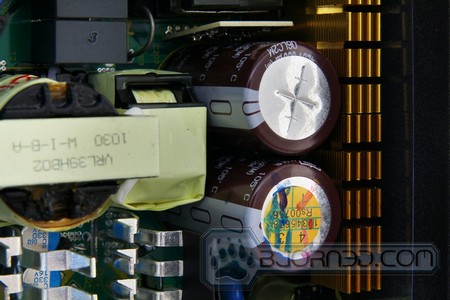

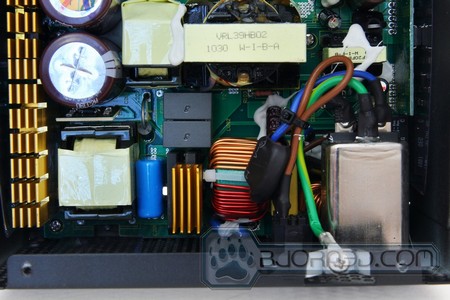










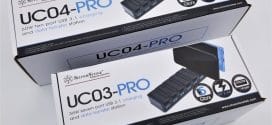






Easy to understand.
Quote:
“We would also like to say that while this power supply performed great on the voltage tests, and power consumption, along with providing clean power to our hardware, it is not suitable for overclockers.”
This statement not only is technically incorrect, it’s ignorant and hopefully NOT what you actually meant to say – which is more like dual GPU cards will require a higher wattage PSU in many cases depending on the GPU cards used and their power consumption.
In regards to the Seasonic X-series 660W PSU, it most definitely is a quality PSU suitable for overclockers. As an example I’m testing s system right now with this PSU and a AMD FX-8350 overclockers to 4.7 GHz. @ 1.4625 Vcore and the PSU isn’t even close to being maxed out with a Kill-A-Watt power consumption of ~450W in a 25 hour stress test with all 8-cores under 100% load. In the 3DMark bench it doesn’t get above 400W from the grid, so this and many quality ~650W PSUs are plenty of “overclockers” and this latest 660W Seasonic has deadly accurate voltage control and amazingly low ripple. BTW this PSU is 80 Platinum rated for it’s efficiency, not Gold. Maybe your pre-release model didn’t note the Platinum rating?